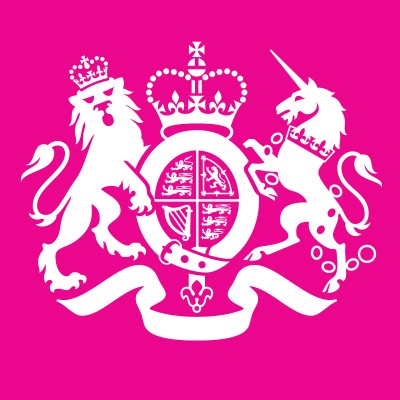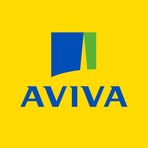Aviva's Bold Move: Navigating the Waters of Competition and Growth
May 15, 2025, 4:31 pm

Location: United Kingdom, Wales, Newport, Wales
Employees: 1001-5000
Founded date: 1954

Location: United Kingdom, England, London
Employees: 10001+
Founded date: 1696
Total raised: $29.97M
In the fast-paced world of finance, mergers and acquisitions are like high-stakes poker games. The stakes are high, and the players are keen. Aviva, a titan in the insurance industry, is currently in the spotlight with its proposed £3.7 billion acquisition of Direct Line. This deal, while promising, has drawn the scrutiny of the UK’s Competition and Markets Authority (CMA). The CMA’s investigation is a critical juncture, one that could either pave the way for Aviva’s expansion or throw a wrench in its plans.
The CMA has launched a phase one inquiry to assess whether the acquisition poses a “realistic prospect of a substantial lessening of competition.” This is a standard procedure, but it carries weight. The CMA has set a deadline of July 10 to make its decision. By then, it will either clear the merger or escalate it to a phase two investigation, which delves deeper into the implications of the deal.
Aviva and Direct Line reached an agreement in December 2024. The terms were enticing for Direct Line shareholders, offering a 73% premium on the firm’s share price before the offer. This is a significant carrot, one that reflects Aviva’s ambition to consolidate its position in the market. Under the deal, shareholders would receive cash, new Aviva shares, and a dividend for each Direct Line share owned. It’s a package designed to sweeten the pot.
Direct Line’s history adds another layer to this narrative. Founded in 1985, it began as part of the Royal Bank of Scotland before becoming an independent entity in 2012. This merger represents a significant shift in the landscape of the insurance market. Aviva aims to leverage Direct Line’s strengths to accelerate its growth strategy, particularly in capital-light operations. The potential for £125 million in cost synergies is a tantalizing prospect for Aviva, promising a more streamlined operation.
However, the backdrop of this acquisition is a government keen on fostering economic growth. The UK government has instructed the CMA to ease regulatory burdens on businesses. This pro-growth stance is a double-edged sword. While it aims to stimulate the economy, it also raises questions about the balance between competition and consolidation. The CMA’s investigation comes at a time when the government is pushing for a more business-friendly environment. The challenge lies in ensuring that this environment does not stifle competition.
Aviva’s CEO, Amanda Blanc, remains optimistic. She asserts that the acquisition is “firmly on track,” despite the CMA’s inquiry. The cash for the takeover has been ring-fenced, indicating that Aviva is prepared to weather any regulatory storms. In a recent trading update, Blanc highlighted the strategic rationale behind the acquisition. She emphasized that the move aligns with Aviva’s goal of becoming a more capital-light business. Currently, 56% of Aviva’s operating profit comes from capital-light operations, and the acquisition of Direct Line could push that figure beyond 70%.
The numbers tell a compelling story. In the first quarter of 2025, Aviva’s general insurance premiums rose by 9% to £2.9 billion. Retirement sales also saw a 4% increase, reaching £1.8 billion. Protection and health sales surged by 19%, driven by consumer demand for private health insurance amid lengthy NHS waiting lists. These figures reflect a robust performance, suggesting that Aviva is on a growth trajectory, even as it navigates the complexities of the acquisition.
Yet, not all is smooth sailing. Aviva’s investment arm faced withdrawals of £906 million in the first quarter, though this was a significant reduction from the £1.8 billion pulled in the same period the previous year. The outflows stemmed from clients withdrawing from internal assets and strategic exits from clients previously part of the group. Despite these challenges, Aviva’s assets under management grew by 1% to £240 billion, buoyed by market movements and strong flows into liquidity strategies.
The interplay between growth and regulation is a delicate dance. The CMA’s investigation could reshape the landscape of the insurance market. If the merger is blocked, Aviva may need to recalibrate its strategy. Conversely, if cleared, it could set a precedent for future mergers in the industry. The outcome will not only impact Aviva and Direct Line but also send ripples through the broader market.
In conclusion, Aviva’s pursuit of Direct Line is a bold move in a competitive arena. The CMA’s investigation adds a layer of uncertainty, but it also highlights the ongoing tension between regulation and growth. As the deadline approaches, all eyes will be on the CMA’s decision. Will it clear the path for Aviva’s expansion, or will it signal a retreat? The stakes are high, and the outcome will shape the future of the insurance landscape in the UK. In this game of strategy, only time will reveal the winner.
The CMA has launched a phase one inquiry to assess whether the acquisition poses a “realistic prospect of a substantial lessening of competition.” This is a standard procedure, but it carries weight. The CMA has set a deadline of July 10 to make its decision. By then, it will either clear the merger or escalate it to a phase two investigation, which delves deeper into the implications of the deal.
Aviva and Direct Line reached an agreement in December 2024. The terms were enticing for Direct Line shareholders, offering a 73% premium on the firm’s share price before the offer. This is a significant carrot, one that reflects Aviva’s ambition to consolidate its position in the market. Under the deal, shareholders would receive cash, new Aviva shares, and a dividend for each Direct Line share owned. It’s a package designed to sweeten the pot.
Direct Line’s history adds another layer to this narrative. Founded in 1985, it began as part of the Royal Bank of Scotland before becoming an independent entity in 2012. This merger represents a significant shift in the landscape of the insurance market. Aviva aims to leverage Direct Line’s strengths to accelerate its growth strategy, particularly in capital-light operations. The potential for £125 million in cost synergies is a tantalizing prospect for Aviva, promising a more streamlined operation.
However, the backdrop of this acquisition is a government keen on fostering economic growth. The UK government has instructed the CMA to ease regulatory burdens on businesses. This pro-growth stance is a double-edged sword. While it aims to stimulate the economy, it also raises questions about the balance between competition and consolidation. The CMA’s investigation comes at a time when the government is pushing for a more business-friendly environment. The challenge lies in ensuring that this environment does not stifle competition.
Aviva’s CEO, Amanda Blanc, remains optimistic. She asserts that the acquisition is “firmly on track,” despite the CMA’s inquiry. The cash for the takeover has been ring-fenced, indicating that Aviva is prepared to weather any regulatory storms. In a recent trading update, Blanc highlighted the strategic rationale behind the acquisition. She emphasized that the move aligns with Aviva’s goal of becoming a more capital-light business. Currently, 56% of Aviva’s operating profit comes from capital-light operations, and the acquisition of Direct Line could push that figure beyond 70%.
The numbers tell a compelling story. In the first quarter of 2025, Aviva’s general insurance premiums rose by 9% to £2.9 billion. Retirement sales also saw a 4% increase, reaching £1.8 billion. Protection and health sales surged by 19%, driven by consumer demand for private health insurance amid lengthy NHS waiting lists. These figures reflect a robust performance, suggesting that Aviva is on a growth trajectory, even as it navigates the complexities of the acquisition.
Yet, not all is smooth sailing. Aviva’s investment arm faced withdrawals of £906 million in the first quarter, though this was a significant reduction from the £1.8 billion pulled in the same period the previous year. The outflows stemmed from clients withdrawing from internal assets and strategic exits from clients previously part of the group. Despite these challenges, Aviva’s assets under management grew by 1% to £240 billion, buoyed by market movements and strong flows into liquidity strategies.
The interplay between growth and regulation is a delicate dance. The CMA’s investigation could reshape the landscape of the insurance market. If the merger is blocked, Aviva may need to recalibrate its strategy. Conversely, if cleared, it could set a precedent for future mergers in the industry. The outcome will not only impact Aviva and Direct Line but also send ripples through the broader market.
In conclusion, Aviva’s pursuit of Direct Line is a bold move in a competitive arena. The CMA’s investigation adds a layer of uncertainty, but it also highlights the ongoing tension between regulation and growth. As the deadline approaches, all eyes will be on the CMA’s decision. Will it clear the path for Aviva’s expansion, or will it signal a retreat? The stakes are high, and the outcome will shape the future of the insurance landscape in the UK. In this game of strategy, only time will reveal the winner.
